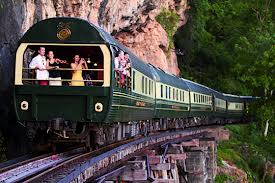 Featuring tours in Singapore, Malaysia, Thailand, and Laos, the Eastern and Oriental Express takes you through rainforests, imposing mountains, rubber plantations, frangipani fields, mango orchards, and even rice fields. Along the way, you can visit old temples, traditional villages, elephant camps, or boutiques where you can shop for local arts and crafts.
Featuring tours in Singapore, Malaysia, Thailand, and Laos, the Eastern and Oriental Express takes you through rainforests, imposing mountains, rubber plantations, frangipani fields, mango orchards, and even rice fields. Along the way, you can visit old temples, traditional villages, elephant camps, or boutiques where you can shop for local arts and crafts.
The trains of the Eastern and Oriental Express were originally built in Japan in 1972 for the New Zealand Railways. It ran between Auckland and Wellington as the Silver Star until 1979, when 24 of its 31 cars were sold to Orient-Express Hotels.
The cars were totally rebuilt and transformed into a luxury train boasting, justifiably, of having the amenities of a 5-star luxury hotel. The train is fully air-conditioned, except for the large observation car at its tail-end. It has two Presidential sleeping compartments, four staterooms in each carriage, and Pullman compartments.
The Pullman compartments include a sofa and fold-out table which you can use by day. At night, these are converted into an upper and lower berth. You need not worry about the conversion. A steward will do it for you while you are enjoying dinner at one of the two dining cars. There is a small en suite bathroom with toilet where you can wash and shower. Electrical sockets are provided for charging your gadgets.
Staterooms are twice the size of a Pullman. In addition to the amenities of the smaller compartment, there is also an armchair and freestanding chair by day. Another difference is that the sofas convert into two lower berths, thus eliminating the need for a ladder.
The Presidential compartments are similar to the Staterooms in design and furnishings. However, it is bigger and has additional chairs and table.
For dinner, you can choose between two dining cars where you can expect the same kind of dinner you get from 5-star hotel restaurants. Dinner is usually included in the fare, though you will have to pay for wine. In addition to the dining cars, two bar cars are also available, one of which is the open-air observation deck.
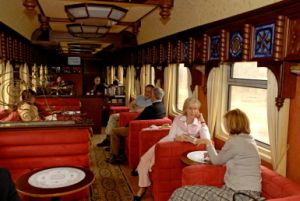
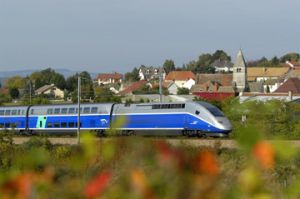 Traveling in Europe from one beautiful city to another (or from one country to another) by train is considered by many to be the best way to experience the continent. You may get to you destination faster but you will miss all those dramatic and stunning sights along the way should you opt to travel by plane.
Traveling in Europe from one beautiful city to another (or from one country to another) by train is considered by many to be the best way to experience the continent. You may get to you destination faster but you will miss all those dramatic and stunning sights along the way should you opt to travel by plane.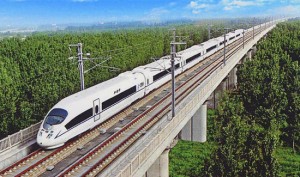 China is a vast country with over a billion people. Many of them travel from one end of the country to the other for the same reasons Americans do –to search for jobs, for business travels, for leisure, or to visit relatives and friends. To accommodate these travelers, China introduced high-speed rail service in 2003. In 2004, it inaugurated the world’s first commercial maglev train in Shanghai. Today, it also has the world’s longest network of high-speed railway capable of 200 kilometers per hour at 8,358 kilometers of routes.
China is a vast country with over a billion people. Many of them travel from one end of the country to the other for the same reasons Americans do –to search for jobs, for business travels, for leisure, or to visit relatives and friends. To accommodate these travelers, China introduced high-speed rail service in 2003. In 2004, it inaugurated the world’s first commercial maglev train in Shanghai. Today, it also has the world’s longest network of high-speed railway capable of 200 kilometers per hour at 8,358 kilometers of routes. 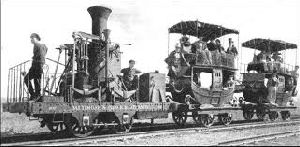 At beginning of the 19th century, most Americans lived along the Atlantic coast. There were, however, an increasing number who wanted to travel west, following the footsteps of the hardy pioneers who crossed the Allegheny Mountains into a land teeming with huge rivers, like the Ohio, Mississippi, and the Missouri, along with their tributaries. Up north, there are the great lakes. With all these water bodies, it was natural that the new pioneers would look to them for their travels.
At beginning of the 19th century, most Americans lived along the Atlantic coast. There were, however, an increasing number who wanted to travel west, following the footsteps of the hardy pioneers who crossed the Allegheny Mountains into a land teeming with huge rivers, like the Ohio, Mississippi, and the Missouri, along with their tributaries. Up north, there are the great lakes. With all these water bodies, it was natural that the new pioneers would look to them for their travels.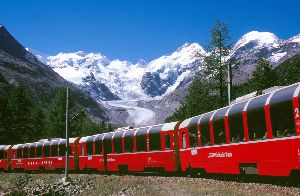 Perhaps one of the best reasons to travel to Switzerland is the Alps. The mountains are undoubtedly a spectacular sight. You can ski down their slopes, climb to their summits, admire them from a distance, or ride the Bernina Express across them.
Perhaps one of the best reasons to travel to Switzerland is the Alps. The mountains are undoubtedly a spectacular sight. You can ski down their slopes, climb to their summits, admire them from a distance, or ride the Bernina Express across them.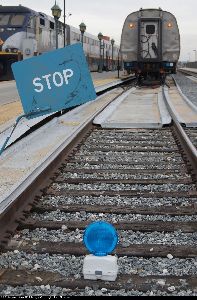 All people transporters have a duty to ensure that their passengers reach their destination on time, and, perhaps more important, safely. For this reason, it is important that their equipment must be regularly inspected and serviced to keep them in proper working condition.
All people transporters have a duty to ensure that their passengers reach their destination on time, and, perhaps more important, safely. For this reason, it is important that their equipment must be regularly inspected and serviced to keep them in proper working condition. 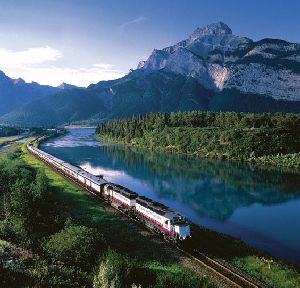 Founded by the Armstrong Group in 1990, the Rocky Mountaineer is a tour company offering western Canadian tour packages on trains running through British Columbia and Alberta. It operates out of Vancouver, British Columbia and, since its opening, has served over a million passengers, making it the busiest passenger train service operated by the private sector.
Founded by the Armstrong Group in 1990, the Rocky Mountaineer is a tour company offering western Canadian tour packages on trains running through British Columbia and Alberta. It operates out of Vancouver, British Columbia and, since its opening, has served over a million passengers, making it the busiest passenger train service operated by the private sector. 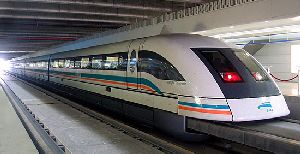 Travel has become an important part of modern life. Sometimes our work requires us to travel to far away destinations, or we want to visit loved ones who have moved to the other end of the country, or perhaps we just want to take a vacation someplace far away. Often, the preferred mode of transport is an airplane because of its speed. Maglev trains, however, may soon give the airlines a run for their money.
Travel has become an important part of modern life. Sometimes our work requires us to travel to far away destinations, or we want to visit loved ones who have moved to the other end of the country, or perhaps we just want to take a vacation someplace far away. Often, the preferred mode of transport is an airplane because of its speed. Maglev trains, however, may soon give the airlines a run for their money. 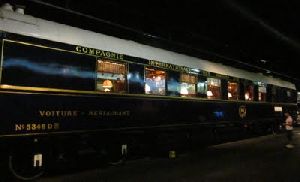 Founded in 1876 by the Belgian Georges Nagelmackers, The Compagnie Internationale des Wagons-Lits (CIWS), in partnership with various national railway companies, operated luxury dining and sleeping cars traveling all over Europe from 1883 to 2009. While the railway companies provided the locomotives, tracks, and stations, CIWS supplied the dining and sleeping cars along with the staff to manage them.
Founded in 1876 by the Belgian Georges Nagelmackers, The Compagnie Internationale des Wagons-Lits (CIWS), in partnership with various national railway companies, operated luxury dining and sleeping cars traveling all over Europe from 1883 to 2009. While the railway companies provided the locomotives, tracks, and stations, CIWS supplied the dining and sleeping cars along with the staff to manage them.